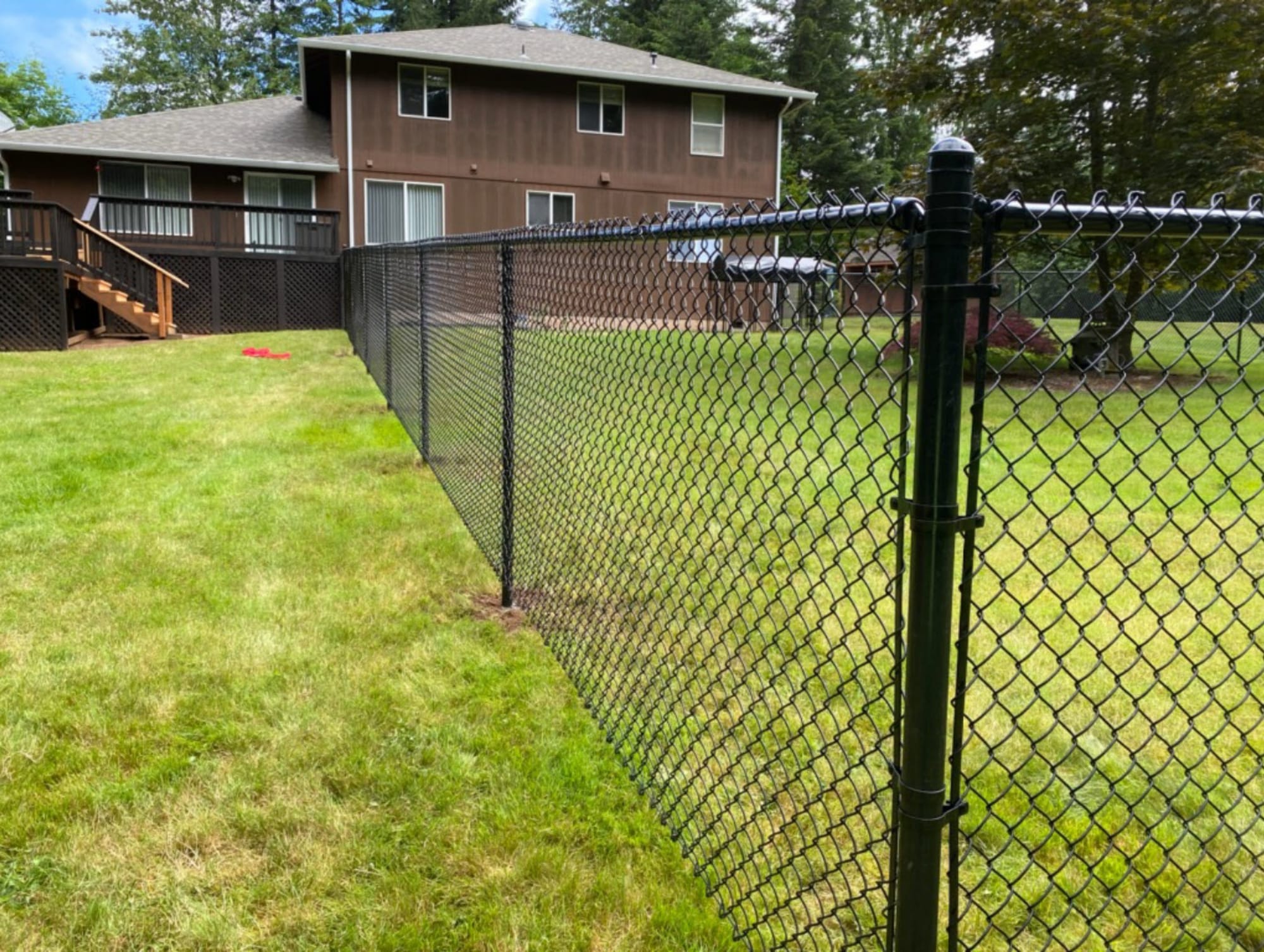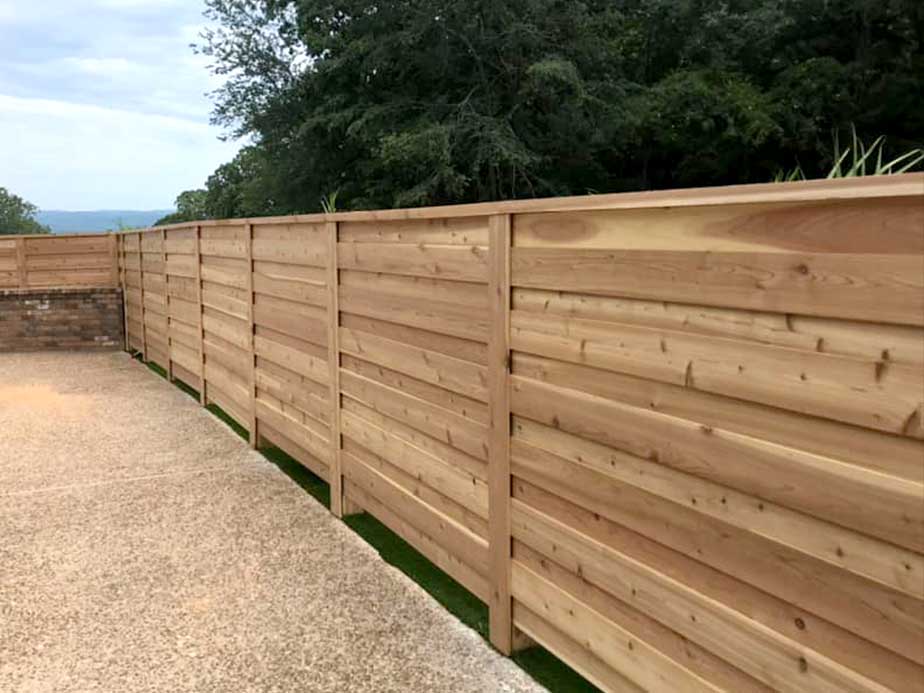All Categories
Featured
When it comes to safeguarding and beautifying your residential property, picking the best fence material is an essential choice. In this detailed guide, we'll explore the most prominent fence products to assist you make an enlightened choice.
Advantages:
Natural aesthetic. High modification (discolorations, paints) When developed tall), great personal privacy (. Relatively inexpensive. Drawbacks:
Needs routine upkeep (paint or staining) Prone to weather damages, pests, and rot. Shorter life expectancy compared to other materials. Best For: Property owners seeking a cozy, traditional appearance with high customization potential.
Benefits:
![]()
Low upkeep (no painting or staining) Immune to weather, rot, and insects. Resilient (can last up to 30 years or even more) Variety of styles and colors. Drawbacks:
First expense can be greater than timber. Can damage or split in severe weather (such as heavy effect) Restricted customization (compared to wood) Best For: Companies and homeowners looking for a low-maintenance, long lasting, and lasting fencing remedy.
Benefits:
Incredibly resilient and safe. Low maintenance (especially aluminum) Aesthetic allure (particularly wrought iron) Great for high-security locations. Negative Aspects:
Can be expensive (particularly functioned iron and steel) Not as personal (unless combined with other materials) Can corrosion (iron and steel need safety finishings) Best For: Homeowners and organizations that need added protection, or those trying to find a high-end, traditional design.
Advantages:
Cost effective and easy to set up. Reduced upkeep. Provides secure borders. Ideal for big residential or commercial properties or pet dog rooms. Disadvantages:
Supplies minimal privacy and looks (unless integrated with covers or slats) Can be seen as unattractive in specific setups. Prone to rust otherwise dealt with. Best For: Huge residential or commercial properties, protection fences, or locations where spending plan is a concern over visual appeals.
Advantages:
![]()
Low maintenance (no staining or securing required) Resistant to fading, rot, and parasites. Lasting and strong. Visual appeal comparable to wood. Drawbacks:
Higher preliminary price compared to wood. Restricted personalization alternatives (compared to natural wood) Can come to be fragile in extreme chilly temperatures. Best For: Homeowners who desire the appearance of timber yet with a much more durable and low-maintenance choice.
Benefits:
Very long lasting and safe and secure. Low maintenance. Deals exceptional personal privacy and soundproofing. Adds value to your property. Downsides:
High preliminary cost. Labor-intensive setup. Minimal style selection (even more conventional styles) Best For: Premium homes or services needing a durable, safe, and trendy fencing.
Advantages:
Eco-friendly and sustainable. Unique and cosmetically pleasing. Simple and light-weight to set up. Can be made use of as an ornamental component. Negative Aspects:
![]()
Prone to weathering and damages over time (unless dealt with) Requires normal maintenance to avoid decaying or splitting. Less secure than steel, stone, or timber. Best For: Eco-conscious homeowners trying to find a fashionable and natural secure fencing solution.
How to Select the Right Material. When choosing the very best secure fencing product for your property, think about the following variables:
Budget: Some materials like timber and chain web link are a lot more economical, while others, like rock and wrought iron, are a lot more expensive. Maintenance: If you're looking for a low-maintenance choice, vinyl, steel, or composite materials are excellent options. Purpose: Think about whether your primary demand is protection, privacy, or appearances. For chain, security or steel web link fencings might be best, while timber or vinyl might suit those seeking privacy. Visual Preferences: The product you choose should enhance the design and design of your residential property. Wood supplies a rustic beauty, while steel and rock supply an even more formal or contemporary appearance. Longevity: Some materials, like vinyl and steel, offer long-lasting resilience, while others, like timber, might call for more upkeep with time. Final thought. Selecting the ideal fencing material is a vital decision that impacts your building's protection, personal privacy, and visual appeal. With a range of alternatives offered, from natural timber to low-maintenance vinyl and resilient steel, it is essential to weigh each material's disadvantages and advantages based on your specific needs and choices. Whether you are trying to find a functional boundary or an ornamental addition, this overview will certainly aid you make the very best option for your building.
- Timber Fencing. Timber fences are a timeless and functional selection that supplies natural beauty and privacy. They come in numerous designs, including picket, privacy, and post-and-rail, making them versatile to different property types and preferences. Timber uses a conventional, rustic beauty, suitable for domestic setups, and is very easy to tailor with paint or stains.
Advantages:
Natural aesthetic. High modification (discolorations, paints) When developed tall), great personal privacy (. Relatively inexpensive. Drawbacks:
Needs routine upkeep (paint or staining) Prone to weather damages, pests, and rot. Shorter life expectancy compared to other materials. Best For: Property owners seeking a cozy, traditional appearance with high customization potential.
- Plastic (PVC) Fence. Plastic fences are coming to be increasingly preferred due to their longevity and low maintenance requirements. Made from artificial materials, vinyl fencings are immune to weather, bugs, and degeneration. They use the appearance of wood but without the maintenance, making them a fantastic option for both property and industrial buildings.
Benefits:

Low upkeep (no painting or staining) Immune to weather, rot, and insects. Resilient (can last up to 30 years or even more) Variety of styles and colors. Drawbacks:
First expense can be greater than timber. Can damage or split in severe weather (such as heavy effect) Restricted customization (compared to wood) Best For: Companies and homeowners looking for a low-maintenance, long lasting, and lasting fencing remedy.
- Metal Secure Fencing (Aluminum, Steel, Wrought Iron) Steel fencings are prominent for their stamina, safety and security, and classic sophistication. Aluminum and wrought iron fencings use an advanced, upscale look, commonly utilized for ornamental functions, while steel fences are selected for their durable safety functions.
Benefits:
Incredibly resilient and safe. Low maintenance (especially aluminum) Aesthetic allure (particularly wrought iron) Great for high-security locations. Negative Aspects:
Can be expensive (particularly functioned iron and steel) Not as personal (unless combined with other materials) Can corrosion (iron and steel need safety finishings) Best For: Homeowners and organizations that need added protection, or those trying to find a high-end, traditional design.
- Chain Link Fencing. Chain web link fencings are a cost-efficient and functional choice, particularly for huge residential properties or locations needing basic, practical borders. They are extensively utilized in both domestic and business settings and can be combined with personal privacy slats for added privacy.
Advantages:
Cost effective and easy to set up. Reduced upkeep. Provides secure borders. Ideal for big residential or commercial properties or pet dog rooms. Disadvantages:
Supplies minimal privacy and looks (unless integrated with covers or slats) Can be seen as unattractive in specific setups. Prone to rust otherwise dealt with. Best For: Huge residential or commercial properties, protection fences, or locations where spending plan is a concern over visual appeals.
- Compound Fence. Compound fencings combine timber fibers and plastic to produce a product that is both reduced and strong upkeep. They offer the appearance of timber with the longevity of plastic and are readily available in different colors and textures.
Advantages:

Low maintenance (no staining or securing required) Resistant to fading, rot, and parasites. Lasting and strong. Visual appeal comparable to wood. Drawbacks:
Higher preliminary price compared to wood. Restricted personalization alternatives (compared to natural wood) Can come to be fragile in extreme chilly temperatures. Best For: Homeowners who desire the appearance of timber yet with a much more durable and low-maintenance choice.
- Stone and Block Fencing. Stone and block fences are outstanding for those seeking optimum durability and a premium aesthetic. These fencings provide unequaled protection, personal privacy, and long life, making them suitable for prestigious residential properties or industrial structures that need a durable obstacle.
Benefits:
Very long lasting and safe and secure. Low maintenance. Deals exceptional personal privacy and soundproofing. Adds value to your property. Downsides:
High preliminary cost. Labor-intensive setup. Minimal style selection (even more conventional styles) Best For: Premium homes or services needing a durable, safe, and trendy fencing.
- Bamboo Fence. Bamboo is an environment-friendly option that supplies an all-natural, rustic appearance while supplying modest safety and security and privacy. It's ending up being a favored for eco-conscious house owners who like an even more sustainable material.
Advantages:
Eco-friendly and sustainable. Unique and cosmetically pleasing. Simple and light-weight to set up. Can be made use of as an ornamental component. Negative Aspects:

Prone to weathering and damages over time (unless dealt with) Requires normal maintenance to avoid decaying or splitting. Less secure than steel, stone, or timber. Best For: Eco-conscious homeowners trying to find a fashionable and natural secure fencing solution.
How to Select the Right Material. When choosing the very best secure fencing product for your property, think about the following variables:
Budget: Some materials like timber and chain web link are a lot more economical, while others, like rock and wrought iron, are a lot more expensive. Maintenance: If you're looking for a low-maintenance choice, vinyl, steel, or composite materials are excellent options. Purpose: Think about whether your primary demand is protection, privacy, or appearances. For chain, security or steel web link fencings might be best, while timber or vinyl might suit those seeking privacy. Visual Preferences: The product you choose should enhance the design and design of your residential property. Wood supplies a rustic beauty, while steel and rock supply an even more formal or contemporary appearance. Longevity: Some materials, like vinyl and steel, offer long-lasting resilience, while others, like timber, might call for more upkeep with time. Final thought. Selecting the ideal fencing material is a vital decision that impacts your building's protection, personal privacy, and visual appeal. With a range of alternatives offered, from natural timber to low-maintenance vinyl and resilient steel, it is essential to weigh each material's disadvantages and advantages based on your specific needs and choices. Whether you are trying to find a functional boundary or an ornamental addition, this overview will certainly aid you make the very best option for your building.
Latest Posts
Inexpensive Luxury: Discover the Benefits of Laminate Flooring
Published Apr 19, 25
1 min read
Get Huge Savings with Montclare Auto Repair Offers - Limited Time Offers!
Published Apr 19, 25
2 min read
Specials & Discounts: Enjoy Deals on Vehicle Maintenance at Montclare Auto Repair
Published Apr 19, 25
2 min read
More
Latest Posts
Inexpensive Luxury: Discover the Benefits of Laminate Flooring
Published Apr 19, 25
1 min read
Get Huge Savings with Montclare Auto Repair Offers - Limited Time Offers!
Published Apr 19, 25
2 min read
Specials & Discounts: Enjoy Deals on Vehicle Maintenance at Montclare Auto Repair
Published Apr 19, 25
2 min read